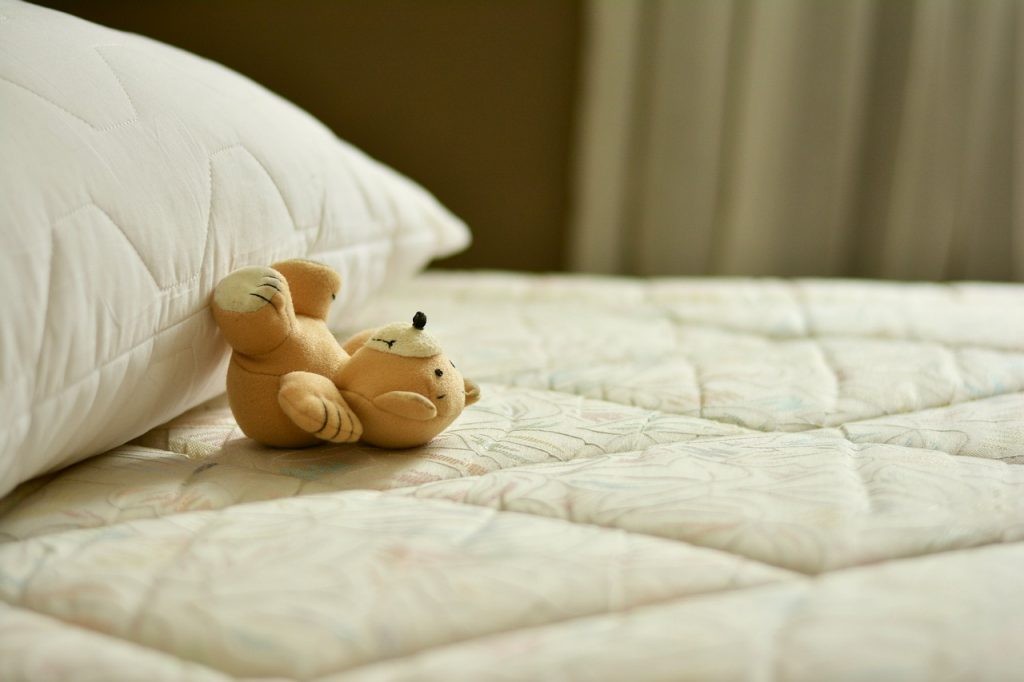Yes. Bed bug mattress covers do work against infestations. Bed bugs (Cimex Lectularis) are nuisance pests which usually hide within the confines of bed mattresses. Bed bugs can severely disturb a person’s sleep and peace of mind. They bite people in the middle of the night which cause severe itching. Bed bugs crawl out of the mattress bite their victim and then return to their safe haven in the mattress.
Table of Contents
What Are Bed Bugs Covers?
Bed bug mattress covers are basically encasements which envelope the entire mattress from all ends to prevent the invasion or escape or bed bugs. These encasements are made from strong grade plastic or clothing or a mix of both materials such as polyurethane, polyester, cotton terry etc.
In order to survive bed bugs need to feed on human blood, as it is the main source of nutrition for them in addition to water.
Similarly, bed bugs like to reside in warm conditions and often feed more in warmer weathers than colder climes. Usually, bed bugs feed once every week but can survive without feeding for up to months. Bed bugs can go dormant when nutrition is not readily available and this state is akin to hibernation.
In some cases, bed bugs live for more than 18 months without feeding whereas some die out within 4 to 6 months from starvation. Bed bugs are hard to kill and do not die out like other pests. Pests such as fleas and lice die out quickly if their contact with feeding host is disrupted.
Newly hatched bed bugs often called nymphs need to feed more than once a week in order to reach adulthood.
How mattress covers work as bed bug protector
Bed bugs come out of the mattress to feed on their prey at night and then go back into the soft folds of the mattress before daytime. The purpose of these encasements is to stop the commute of bed bugs, to prevent them from going in or coming out of a mattress during the night.
Any plastic sheet or fabric is not good enough to stop the activity of these pests. Bed bug encasements are quite thick and dense in nature and are specially created to ward off the pests.
Using technological advancements these covers are created in laboratories by testing them for resistance against parasite bites and then sent out into production at factories.
The encasements envelope the mattress not letting bed bug come in or go out even if they bite it thereby actively preventing new infestations or letting an old bed bugs suffocate. After treating a mattress with pesticides there may still be some bed bugs left inside it.
For instance bed bug eggs can hatch later on and mature to an adult which restarts the cycle of an infestation. But using an encasement traps the bed bug eggs and nymphs inside leading to starvation over time and ultimately their demise. A mattress cover can even be washed from time to time.
One should wash an encasement and dry it at 140°F (60°C), so it can kill the remaining bugs and eggs inside.
An efficient bed bug cover should be:
- Sealed
- Bite Resistant
- Soft & Smooth
- Hypoallergenic
- Waterproof
- Anti-Bacterial
Why do bed bugs hide in mattresses?
Bed bugs have a preference for residing in mattresses, as about 70% of bed bugs infesting a house will hide inside a mattress. Mattresses provide the ideal conditions for bed bugs to reside. The insides of a mattress have the perfect temperature as they keep the bed bugs warm.
Similarly the softness of the mattress folds allows the bed bugs to easily crawl in and out of it at night. Sunlight is deadly for bed bugs and they never reside in places exposed to it. The insides of a mattress are never exposed to sunlight and remain dark year round hence making it an ideal hiding spot.
The biggest draw for bed bugs to dwell in mattresses is their close proximity to sleeping humans whom they bite and suck blood. As advised by the EPA, it takes at least a year for the bed bugs trapped inside a mattress to die from suffocation and lack of nutrition.
Advantages of mattress covers for bed bug control:
- Covering a mattress with an encasement provides preventive protection against bed bugs. When bed bugs newly enter a home they make their way to a mattress. Having a mattress cover in place restricts the movement of the bed bugs to the outside of the encasement. Thus covers foil the plan of bed bugs to infest mattress folds and box springs thereby making access to sleeping prey difficult. Therefore mattress encasements can be used to protect new mattresses, even newly bought ones in already infested homes.
- Mattress covers also allow the protection of already infested mattresses. Buying a mattress cover is cheaper than buying a new mattress. Therefore if a mattress has been infested by bed bugs there’s no need to panic. Simply using a cover for at least a year can ensure all the bed bugs inside the mattress will die with starvation. After encasing an infested mattress a person can soundly sleep knowing they won’t be bitten at night anymore.
Features of a bed bug killing mattress cover:
For a mattress cover to be effective in stopping a bed bug infestation it needs to have a set of qualities such as:
- Bite Proof:
A bed bug mattress cover needs to be bite resistant to not just bed bugs a number of insects. Any tiny hole or opening created from the bite of any insect can start over the commute of bed bugs in and out of the mattress. Therefore a cover needs to be completely bite proof.
- Density:
In order to effectively stop the commute of bed bugs in and out of the mattress, a cover needs to have a thick density. Even the density needs to be thick the cover should be smooth and not rustle when covering the mattress.
- Special Zipper:
A mattress cover needs a specially designed zipper which can seal the mattress completely inside. Such zipper are created using state of the art tech which gives it the ability to prevent any accidental opening when a person is sleeping on the bed. The zipper needs to have such fine and closely bonded teeth that it prevents the escape or entry of bed bugs completely.
- Stretching Ability:
A cover needs to be stretchable so it can snugly and properly fit a mattress. Mattresses come in different sizes and the same size from different companies can vary. For instance the Queen Size mattress by one company will never be equal to a mattress by another company. A good cover needs to be able to stretch so it can fit a mattress properly.
- Non-Toxic:
A bed bug mattress cover needs to be non-toxic, chemical free and eco-friendly. A mattress cover soaked in chemicals and pesticides can be harmful to human health. A person sleeping over toxic covers can absorb the chemicals via skin contact which can lead to poisoning.
- Factory Make:
A factory made bed bug mattress cover is always better than hand or home-made ones. The entire concept of a bed bug cover is based on technology which is can only be produced using proper machinery. Handmade covers lack the bed bug repellent and bite resistant technology. Similarly handmade covers cannot assure quality control and can have multiple flaws which are not effective against the problem of bed bug infestations.
- Tear Resistant:
Choosing the right material to make a bed bug mattress cover is very important as it needs to be strong enough not to tear. Therefore a bed bug mattress cover cannot simply be made from plastic or fabric but special materials which mix polyester and cotton terry are designed specifically for creating covers.
Frequently Asked Questions
Do Bed Bug Mattress Covers Kill Bed Bugs?
Yes, But over time. Bed bugs can survive for a long time without oxygen. When inside a completely airtight container, they can live for up to 5 days. Covers cannot kill bed bugs instantly but over a long duration they can starve and suffocate the pests, ensuring there are no gaps for the bed bugs to get through.
Do Mattress Covers Stop Bed Bugs From Biting?
Yes, once covered the bed bugs inside the mattress cannot bite a person anymore. The encasement traps the bed bugs already inside from coming out and biting. However a cover cannot stop bed bugs from other furniture in an infested house to travel to the bed and bite a person.
Do Normal Mattress Protectors Work for Bed Bugs?
No, only covers especially designed with the qualities of a bed bug encasement provide protection against the pests. Although bed bug mattress covers can be expensive they are created with the right technology to battle bed bug bites and invasion.
Do Mattress Covers Eradicate Bed Bugs Completely?
No, mattress covers can only protect against infestations in a mattress. Unfortunately, such mattress covers cannot get rid of bed bugs in an already infested home. Even without access to mattresses bed bugs can hide in various other places in a house and bite people from there. To completely eradicate bed bugs from an infested home one needs to seek help from a professional pest controller. Bed bugs can habitat places such as:
- Wardrobes, closets and baseboards
- Carpets and rugs
- Curtains and windows
- Cracks in the wall, floors and ceiling
- Electrical outlets
- Couches, sofas and chairs

